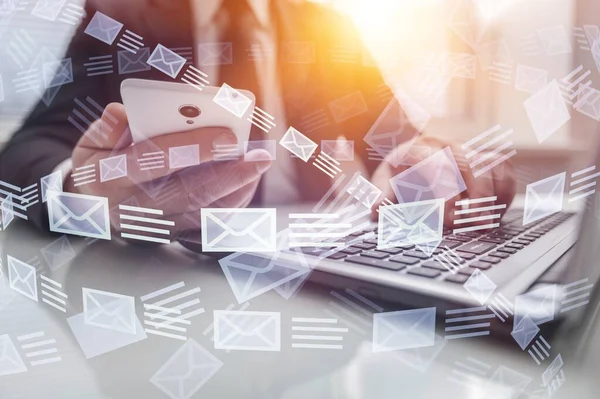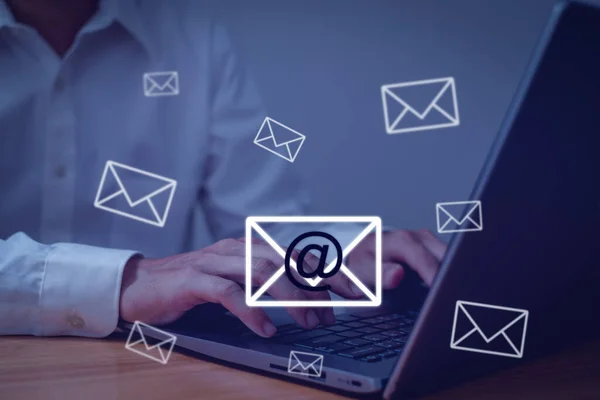DMARC Records Explained: Protecting Your Domain From Email Spoofing And Phishing
In today's digital landscape, email remains a primary communication tool for individuals and businesses alike. However, its widespread use has also made it a target for malicious activities such as email spoofing and phishing. These threats can lead to significant financial losses, data breaches, and damage to a company's reputation.
One of the most effective methods for combating these email-based threats is the implementation of DMARC (Domain-based Message Authentication, Reporting, and Conformance) records. This article explores what DMARC records are, how they work, and why they are essential for protecting your domain from email spoofing and phishing.
Understanding Email Spoofing and Phishing
Before diving into DMARC, it's important to understand the problems it aims to solve: email spoofing and phishing. Email spoofing involves sending emails that appear to come from a trusted source, such as a well-known company or a colleague, to deceive the recipient. Phishing, on the other hand, uses these deceptive emails to trick recipients into revealing sensitive information, such as login credentials or financial details.
Both spoofing and phishing can have severe consequences for individuals and organizations, including identity theft, financial losses, and compromised data security. To counter these threats, email authentication protocols like DMARC have been developed.

What is DMARC?
DMARC is an email authentication protocol designed to give domain owners the ability to protect their domain from unauthorized use, specifically email spoofing. It builds on two existing mechanisms: SPF (Sender Policy Framework) and DKIM (DomainKeys Identified Mail). DMARC adds a critical layer of policy and reporting to these existing technologies, making it easier for email receivers to determine if an email is legitimate and how to handle emails that fail authentication checks.
How DMARC Works
SPF and DKIM
This protocol allows domain owners to specify which mail servers are permitted to send email on behalf of their domain. This is done by adding a DNS record1 with a list of authorized IP addresses. When an email is received, the recipient's mail server checks the SPF record to verify that the email comes from an authorized source.
This protocol uses cryptographic signatures to verify that an email has not been altered during transit. The sender adds a DKIM signature to the email header, which is then validated by the recipient's mail server using the sender's public key published in the DNS records.
DMARC Policy
DMARC leverages both SPF and DKIM by requiring that either or both of these checks pass for an email to be considered authentic. A DMARC record is published in the DNS and specifies the domain owner's policy for handling emails that fail authentication checks.
This policy does not take any action on failing emails but provides reporting data. Emails that fail authentication checks are marked as spam or placed in the recipient's junk folder. Emails that fail authentication checks are rejected outright and not delivered to the recipient.
Reporting
One of the most powerful features of DMARC is its reporting capability. DMARC provides two types of reports: Aggregate Reports provide a summary of authentication results and are typically sent daily. They include information about the sending sources, email volume, and authentication outcomes. Forensic Reports are more detailed and include samples of emails that failed authentication checks. They are sent in real-time and can help domain owners identify specific issues or attacks.
Setting Up DMARC
Setting up DMARC involves creating a DMARC record and adding it to your domain's DNS. Here are the steps to set up DMARC:
- Create a DMARC Record: A DMARC record is a TXT record that includes several tags defining the policy and reporting options. The basic structure of a DMARC record looks like this:
css v=DMARC1; p=none; rua=mailto:[email protected]; ruf=mailto:[email protected]; pct=100
v: Specifies the version of DMARC (DMARC1 is the current version).
p: Specifies the policy (none, quarantine, or reject).
rua: Defines the email address to send aggregate reports to.
ruf: Defines the email address to send forensic reports to.
pct: Specifies the percentage of emails to which the DMARC policy is applied (100 means all emails).
- Publish the DMARC Record: Once the DMARC record is created, it needs to be added to your domain's DNS as a TXT record. This can usually be done through your domain registrar's DNS management interface.
- Monitor Reports: After publishing the DMARC record, monitor the aggregate and forensic reports to understand how your domain's emails are being authenticated and identify any issues.
- Adjust Policy: Based on the insights from the reports, you can adjust the DMARC policy from "none" to "quarantine" and eventually to "reject" to increase the protection level.
Benefits of DMARC
Improved Email Security
By ensuring that only authorized senders can send emails on behalf of your domain, DMARC significantly reduces the risk of email spoofing and phishing attacks. This helps protect your brand, customers, and employees from malicious emails.
Enhanced Visibility
DMARC's reporting feature provides detailed insights into your domain's email traffic, including who is sending emails on your behalf and how those emails are being handled. This visibility helps you identify and address potential issues, such as unauthorized senders or misconfigurations.
Increased Trust
When your emails are properly authenticated, they are less likely to be marked as spam or rejected by recipient mail servers. This improves email deliverability and ensures that your legitimate emails reach their intended recipients. As a result, recipients are more likely to trust emails coming from your domain.
Simplified Management
DMARC simplifies the management of email authentication by providing a unified policy that covers both SPF and DKIM. This makes it easier to configure and maintain your email authentication setup.
Challenges and Considerations

Complexity
Setting up DMARC requires a good understanding of DNS, SPF, and DKIM. Organizations without in-house expertise may need to seek external assistance to configure and manage DMARC effectively.
Initial Monitoring
Starting with a "none" policy allows you to monitor email traffic without affecting email delivery. However, this initial monitoring phase is crucial for identifying and addressing issues before moving to stricter policies like "quarantine" or "reject."
Ongoing Maintenance
DMARC is not a set-and-forget solution. It requires ongoing monitoring and maintenance to ensure that your email authentication remains effective and up-to-date with any changes in your email infrastructure. Visit Dmarcreport for more details on dmarc record.

